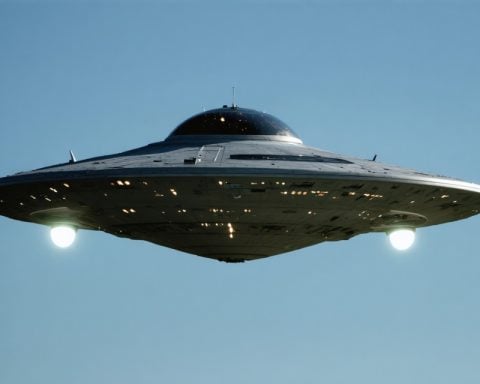Milestone Achieved in Space Technology
In January 2025, India made headlines by successfully docking two satellites, Chaser and Target, in a groundbreaking operation that established it as the fourth nation to achieve such a feat. This pivotal moment, orchestrated by the Indian Space Research Organisation (ISRO), marks a significant step in New Delhi’s bold ambitions in space technology.
The satellites, each weighing 220 kilograms, were launched together from the Satish Dhawan Space Centre in December 2024. During the sophisticated docking experiment referred to as SpaDeX, ISRO confirmed that control of both satellites as a unified entity was successfully achieved after the docking process.
Reflecting on this accomplishment, Prime Minister Narendra Modi emphasized the importance of this mission as a crucial milestone for India’s future space endeavors. With this achievement, India joins the ranks of countries like the United States, the Soviet Union, and China, highlighting its emergence as a notable player in the international space arena.
Furthermore, India’s advancements in space technology extend beyond exploration, enhancing its military capabilities through improved satellite and intelligence systems. Modi has previously outlined ambitious plans, including a domestically produced space station by 2035 and aspirations to land an Indian astronaut on the moon by 2040. With its rich history in space exploration dating back to the 1960s, India continues to push boundaries, having also landed a spacecraft near the moon’s south pole in 2023.
Beyond the Stars: The Broader Implications of India’s Space Milestone
India’s recent success in satellite docking not only elevates its standing in the space community but also carries profound implications for global economic dynamics. As nations harness space technology to enhance communication, navigation, and surveillance, India’s capabilities could bolster economic partnerships, particularly in the burgeoning field of satellite services. This strategic advancement is poised to facilitate greater global cooperation in space exploration, potentially igniting a new wave of international ventures.
The environmental impact of space technology remains a critical consideration. As the number of launched satellites increases, so does the potential for space debris—which poses risks to both current and future missions. India’s advancements could set a precedent for sustainable practices in space operations, contributing to international conversations on responsible space exploration and debris mitigation strategies.
Looking forward, the trends emerging from India’s space program suggest a broader commitment to science and technology education, positioning a generation for careers in high-demand fields. This investment in human capital could stimulate domestic innovation while fueling a culture of scientific inquiry. As aspirations mount towards Mars and beyond, India’s burgeoning space ambitions may inspire a global shift in priorities toward collaborative exploration efforts that promise to elevate humanity’s understanding of the cosmos. Ultimately, India’s milestone signifies more than just a technical achievement; it embodies a vision for a unified and innovation-driven future in space exploration.
India’s Space Odyssey: A Leap Towards a New Era in Space Technology
Milestone Achieved in Space Technology
In January 2025, the Indian Space Research Organisation (ISRO) made a remarkable breakthrough by successfully docking two satellites, Chaser and Target, affirming India’s position as the fourth nation in the world to achieve this feat. The operation, which took place during the SpaDeX experiment, followed the launch of the satellites in December 2024 from the Satish Dhawan Space Centre.
This pivotal achievement signifies more than just technical prowess; it heralds a new chapter in India’s aspirations in space technology. Prime Minister Narendra Modi underscored the significance of this mission, positioning it as a vital milestone for the country’s future endeavors in outer space.
Features of the Docking Technology
The docking operation utilized advanced automation technology and precise navigation systems. By controlling both satellites as a unified entity post-docking, ISRO demonstrated its capabilities in satellite coordination and autonomous operations, which are crucial for future complex missions and space exploration.
Applications and Use Cases
India’s advancements in space technology can be applied across various sectors, including:
1. Communication: Enhanced satellite communication for nationwide connectivity.
2. Weather Forecasting: Improved accuracy in meteorological data collection.
3. Agricultural Monitoring: Satellite-based monitoring systems for crop health and yield predictions.
4. Disaster Management: Real-time satellite imagery for effective disaster response and management.
Limitations and Challenges
While this achievement is significant, ISRO faces challenges including:
– Operational Costs: Maintaining a fleet of satellites involves substantial financial investments.
– Technological Hurdles: Continued advancements in automation and AI are needed to remain competitive in the global space industry.
– International Collaboration: Navigating geopolitical dynamics to foster collaborations with other space-faring nations.
Future Prospects and Predictions
Looking ahead, India aims to further its ambitions with plans for:
– A Domestic Space Station by 2035: Development of an indigenous space station that will serve as a platform for research and international collaboration.
– Manned Lunar Missions: Landing an Indian astronaut on the moon by 2040, which will highlight India’s capabilities in human spaceflight.
Market Analysis and Innovations
India’s robust space program has attracted global attention, catalyzing collaborations with private entities and international space agencies. Recent trends suggest increasing investment in space startups, which aim to leverage ISRO’s technologies for commercial space ventures. As India continues to innovate, it positions itself as a significant player in the burgeoning global space economy.
Conclusion
As India embarks on this exciting chapter in its space journey, the successful docking of Chaser and Target is a cornerstone achievement that lays the groundwork for future explorations and continuous advancements in technology.
For more insights on India’s space initiatives and developments, visit the ISRO website.



















